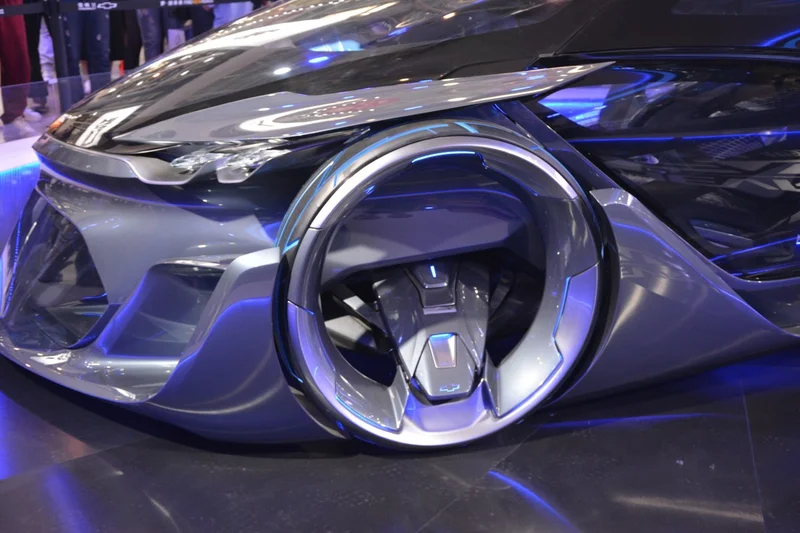Starlink Satellite Count: Orbit Numbers and Falling Concerns
Starlink's Unseen Cost: The Rising Tide of Space Junk
Since 2019, SpaceX has launched a constellation of Starlink satellites with the goal of blanketing the globe in broadband internet. The ambition is impressive, the technological achievement undeniable. But a closer look at the numbers reveals a growing, and largely unacknowledged, problem: the accelerating rate at which these satellites are failing and burning up in the atmosphere.
The Numbers Don't Lie: A Rising Attrition Rate
The headline number is striking: over 500 Starlink satellites have experienced unplanned reentries since 2019. That's a significant chunk of the more than 10,000 launched. To be precise, SpaceX has launched over 10,000 satellites since May 2019. And while the company designs its satellites to deorbit after about five years, the sheer volume of early failures raises serious questions about the long-term sustainability of the project. As of November 2025, approximately 1,204 Starlink satellites are no longer functioning. How Many Starlink Satellites Have Fallen Out Of The Sky? - bgr.com
SpaceX states that the satellites are designed to disintegrate upon reentry. That’s somewhat comforting, but it doesn't negate the fact that we're essentially creating a controlled (and uncontrolled) rain of metal debris in the upper atmosphere. What are the long-term effects of this? What are the atmospheric consequences?
The official explanation points to increased solar activity. The sun is currently in its 25th solar cycle, a period marked by increased solar flares and coronal mass ejections. Denny Oliveira, a space physicist, leads a team studying the sun's current solar cycle. These events heat and expand Earth's upper atmosphere, increasing drag on low-Earth orbit satellites. Increased drag causes satellites to "fall" out of orbit. It's a plausible explanation, but is it the whole explanation? SpaceX's Starlink and other satellites face growing threat from sun - New Scientist
Here's where my analysis suggests a potential discrepancy. If solar activity is the primary driver, shouldn't we see a similar failure rate across all low-Earth orbit satellites, not just Starlink? Details on comparative failure rates for other satellite constellations are surprisingly scarce. And this is the part of the analysis that I find genuinely puzzling. Why isn't there more publicly available data comparing the performance of different satellite constellations under similar solar conditions? What does that lack of transparency suggest?

Beyond the Hype: A Sustainability Question
The sheer scale of the Starlink project dwarfs previous satellite deployments. There are currently more than 10,000 satellites in orbit (the highest number in history), and 7,669 of those are Starlink. The company is launching satellites at an unprecedented pace. The claim that approximately 1,000 Starlink satellites have re-entered Earth's atmosphere at a rate of one or two per day sounds almost routine. But consider the cumulative impact: a thousand satellites, each designed to burn up completely, releasing their constituent materials into the atmosphere.
SpaceX emphasizes that the satellites are designed to disintegrate. But what about the manufacturing process? What about the rare earth minerals used in their construction? What's the environmental footprint of building and launching thousands of these devices, knowing that a significant percentage will fail prematurely? Are we trading improved internet access for a less sustainable planet?
And what about the impact on astronomy? While SpaceX has implemented some measures to reduce the satellites' brightness, they remain a source of concern for astronomers. The proliferation of these satellites is fundamentally changing our view of the night sky.
Space Debris: An Inconvenient Truth?
The narrative around Starlink focuses on connectivity and innovation. But the data paints a more complex picture. The rising number of deorbited satellites raises questions about the true cost of this ambitious project. Are we adequately accounting for the environmental and astronomical consequences? Or are we simply too enamored with the promise of global internet access to ask the tough questions?
A Blind Spot in the Starry Sky
The lack of comprehensive, comparative data is troubling. Until we have a clearer picture of the failure rates across different satellite constellations and a better understanding of the long-term environmental impacts, the true cost of Starlink remains an open question.
-

Warren Buffett's OXY Stock Play: The Latest Drama, Buffett's Angle, and Why You Shouldn't Believe the Hype
Solet'sgetthisstraight.Occide...
-

The Business of Plasma Donation: How the Process Works and Who the Key Players Are
Theterm"plasma"suffersfromas...
-

The Great Up-Leveling: What's Happening Now and How We Step Up
Haveyoueverfeltlikeyou'redri...
-

NJ's ANCHOR Program: A Blueprint for Tax Relief, Your 2024 Payment, and What Comes Next
NewJersey'sANCHORProgramIsn't...
-

The Future of Auto Parts: How to Find Any Part Instantly and What Comes Next
Walkintoany`autoparts`store—a...
- Search
- Recently Published
-
- Netflix Stock: Split Speculation and What It Means – What Reddit is Saying
- Saylor Moon: What's the Deal?
- World Liberty Financial, Trump, and Crypto: What's the Connection?
- Social Security Retirement Age Changes: What to Expect and the Impact – What Reddit is Saying
- Nvidia Stocks: AI Hype vs. Reality
- Ethereum Price: Plunge vs. Rally – What We Know
- Bitcoin's Bear Market: Liquidity Worries vs. Future Potential
- Nvidia Stock Price: What's Driving the Surge and What's Next
- Avelo Airlines' Route Shuffle: What's the Deal?
- Starlink Satellite Count: Orbit Numbers and Falling Concerns
- Tag list
-
- Blockchain (11)
- Decentralization (5)
- Smart Contracts (4)
- Cryptocurrency (26)
- DeFi (5)
- Bitcoin (30)
- Trump (5)
- Ethereum (8)
- Pudgy Penguins (5)
- NFT (5)
- Solana (5)
- cryptocurrency (6)
- XRP (3)
- Airdrop (3)
- MicroStrategy (3)
- Stablecoin (3)
- Digital Assets (3)
- PENGU (3)
- Plasma (5)
- Zcash (5)
- Aster (6)
- investment advisor (4)
- crypto exchange binance (3)
- ethereum price (3)
- SX Network (3)
